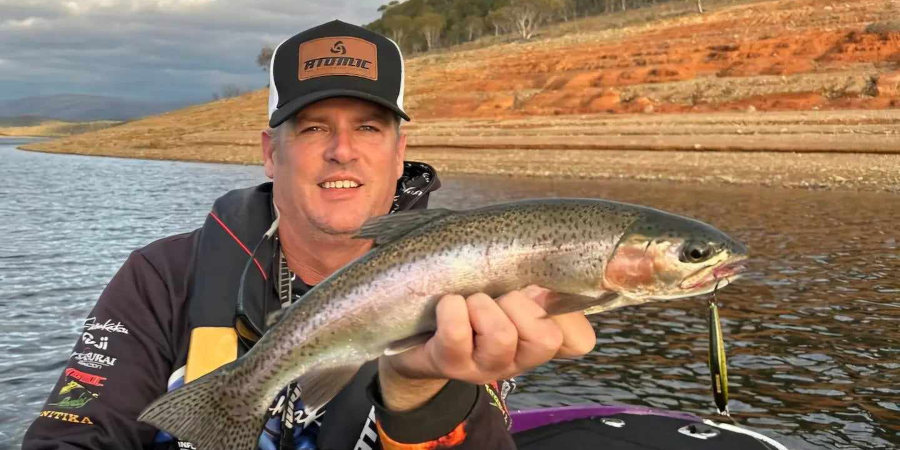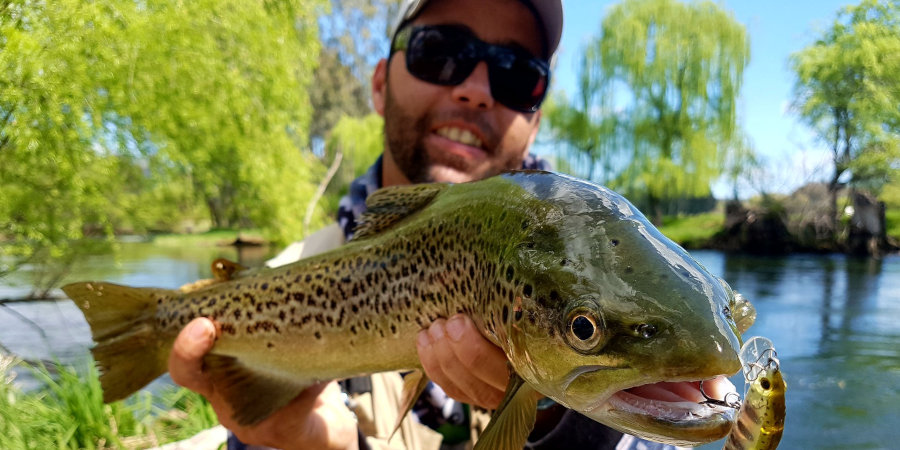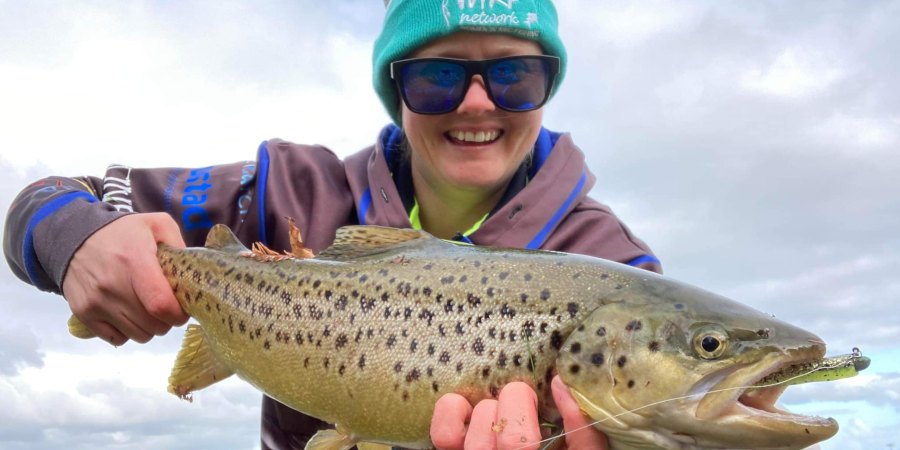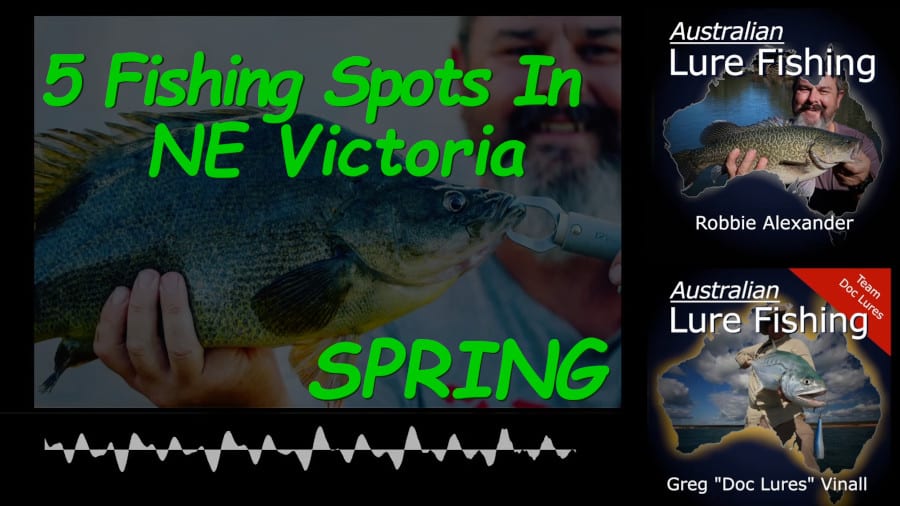Cailin’s chat with Matt Mildren is ALF EPISODE 672 Check out our archives for more information on Fishing For Trout!

If you’re planning a trip to Lake Dartmouth (aka Dartmouth Dam) to catch some trout, this guide is your ultimate companion. Based on an insightful interview with Matt Mildren, a seasoned angler who regularly fishes Lake Dartmouth, here are the key points you need to know for a successful fishing experience.
When and Where to Fish
Seasons and Conditions
Autumn: The beginning of autumn can still be quite warm, with water temperatures around 18 degrees. As it cools to about 14 degrees, trout start moving shallower. This is a great time to fish deep using downriggers or paravanes.
Winter: In winter, water temperatures drop significantly, and trout can be found higher in the water column. Fish the edges and rocky banks for the best results. Windy, rough conditions often lead to better trout activity.
Spring: Spring is prime time for trout fishing. Post-spawn, trout are on a feeding frenzy with warming temperatures and abundant insect life. This is an excellent time for both trolling and casting, especially along the banks.
Summer: Summer is challenging due to high water temperatures. Trout move deeper, and fishing is best during early morning or late evening. The pondage below the dam offers cooler water and active fish.
Key Locations
- Boat Ramp Vicinity: You can start catching fish right near the boat ramp.
- Wind-Affected Banks: Look for banks hit by wind as they attract food sources.
- Feeder Creeks and Rivers: Particularly after rain, feeder creeks and rivers become hotspots due to increased water flow and spawning activity.
- Rocky and Clay Banks: These areas offer good cover and food sources like gudgeon and yabbies.
How to Fish
Techniques
Trolling: This is the most popular method at Lake Dartmouth. Use Tassie Devils, which work well at various depths and speeds (2.7 to 4 km/h). Downriggers and leadcore lines are effective for controlling lure depth.
Casting: Ideal for targeting fish along the banks. Use soft plastics like the Berkeley T-tail minnow on a 1/6 or 1/4 ounce jighead. Focus on rocky and clay banks, mimicking gudgeon and yabbies.
Weather Considerations: Bad weather often means good trout fishing. Wind, rain, and low-pressure systems tend to turn the fish on. Fish wind-affected points and use trolling to cover both rough and calm areas.
Tackle and Lures
Rod and Reel Setups
- Casting Setup: A 7’3″ 1-4kg Daiwa Infeet rod paired with a Daiwa TD Black 2000 reel. Another option is a 7’2″ 1-3kg Abu Garcia Veritas PLX Tournament Edition rod with a Daiwa Exceler 2500 reel.
- Trolling Setup: An Abu Garcia 6600 C4 reel with an 18lb leadcore line, followed by a 20m monofilament leader and a 4-5m fluorocarbon leader.
Lures
- Tassie Devils: Versatile for both trolling and casting. Effective colours include Bleeding Flamingo, Yukon Beam Bomber, and Gold Zebra. Replace trebles with Decoy Dancing Jack DJ 54 assist hooks for better hook-ups.
- Berkeley T-tail Minnow: Use the black and gold speck variant on Tackle Tactics finesse headlocks. Ideal for imitating gudgeon and yabbies.
- Pro Lure ST72 Minnow: Comes in shallow and deep bib versions. Use the shallow bib for top 50cm of water and the deep bib for up to 2.2m depth. Great for mimicking baitfish.
- Daiwa Double Clutch 75: A deeper-diving option that works well for targeting fish in deeper water.
Line and Leader
- Main Line: 8lb Taz line braid.
- Leader: 6-10lb fluorocarbon leader. Use heavier leaders (up to 10lb) in heavy structure areas.
Additional Tips
Wind and Moon Cycles
- Wind: Fish wind-affected areas as they concentrate food sources and create ambush opportunities.
- Moon Cycles: Experiment with fishing during moonrise and moonset periods, which can trigger bites.
Catch and Release
- Barotrauma: Use hypodermic needles to vent fish suffering from barotrauma.
- Live Wells: In warm months, keep fish alive longer by cooling live well water with ice packs.
Best Practices
- Repeat Success: When you catch a fish, continue fishing that spot. Trout often group together, so multiple catches are likely in the same area.
- Adapt to Conditions: Adjust your fishing techniques based on the time of day and weather conditions to keep your lures in the optimal strike zone.
Matt Mildren
Freshwater Fishing Specialist
Matt has fished Lake Dartmouth for many years, along with other trout and cod fisheries in NE Victoria and SW NSW. He’s been a contributor to the social fishing network for 3 years or so and enjoys writing fishing content on a regular basis.
Related Episodes

Lake Eucumbene Fishing: Mastering Trout With Nick Reay
Nick Reay has been fishing Lake Eucumbene for over three decades and understands the trout there very well. In today’s episode he share tips for stepping up your success in this system at any time of year.

Melbourne Trout Fishing Secrets
ALF EPISODE 666 Check out our lure fishing archives for more information on Brown Trout and Rainbow Trout FishingMelbourne’s scenic Dandenong area is a paradise for trout anglers, and no one knows its waters better than Julian Congues Straub. Despite his young age,...

Conquering River And Stream Trout In Southern NSW With Wayne Dubois
Wayne “Mr Freshwater” Dubois has been trout fishing the river and streams of southern NSW for decades and has racked up countless quality fish over that time. Today he shares some tips for early in the season when the water is cold and clear and the trout are aggressive.

Episode 627: Lake Wendouree Trout With Caitlin Berecry-Brookes And Kelsi Gull
Lake Wendouree trout feed aggressively during the winter months, and Kelsi Gull makes the most of that opportunity by getting out and chasing them multiple times per week over winter. Some great advice in this episode for anyone interested in extracting trophy trout from a shallow, weedy lake system.

Episode 539: Top Fishing Spots In NE Victoria During Spring With Robbie Alexander
NE Victoria starts to fire up during the spring period and Robbie Alexander wastes no time taking advantage of the yellowbelly, cod, redfin and trout opportunities that become available. In today’s interview Robbie shares his best advice for top spring time fishing spots.

Lake Eucumbene Fishing: Mastering Trout With Nick Reay
Nick Reay has been fishing Lake Eucumbene for over three decades and understands the trout there very well. In today’s episode he share tips for stepping up your success in this system at any time of year.

Melbourne Trout Fishing Secrets
ALF EPISODE 666 Check out our lure fishing archives for more information on Brown Trout and Rainbow Trout FishingMelbourne’s scenic Dandenong area is a paradise for trout anglers, and no one knows its waters better than Julian Congues Straub. Despite his young age,...



0 Comments